How to Clean Wood Floors to Keep Them Looking Beautiful
Of all the choices in home flooring, wood stands out for many as the most beautiful. Add to that, wood is durable, coordinates well with any decor, and most Realtors agree that it improves the home’s value at resale. Knowing how to protect and clean wood floors is essential—and surprisingly easy.
The key to cleaning floors properly is to know what type of wood you have. This post is devoted to real wood. We will look at laminate wood-like, faux wood flooring in a future post.
Authentic, real wood flooring comes in one of two ways:
Solid Wood Flooring
This type of flooring is just as it sounds—solid pieces of wood that have been milled, planed, and sanded smooth. This flooring is cut from single pieces of lumber and each piece or plank is solid all the way thru from top to bottom. Solid wood flooring can be left natural or stained and sealed. If it suffers damage or excessive wear, solid wood can be sanded down and refinished. Solid wood by its nature is subject to warping or buckling. This can happen as a result of getting water-soaked or if subjected to harsh weather as.
Is it finished?
You know you have solid wood flooring but do you know how it is finished? No worries. When it comes to cleaning wood floors, you need to figure out is whether or not your floors have a finish. You don’t really need to know the type of finish. The important fact is whether the floors have been treated in some way to make them resistant to standing water, which is the enemy of all wood floors.
Drop-of-water test
To discover if your flooring is finished, drop a single drop of water on the floor. If it beads and just sits there, the flooring has been finished. If the drop of water soaks in and disappears leaving a dark spot, the wood is not finished.
What follows is for finished solid or engineered wood flooring only. It cannot be mopped since it will damage the flooring.
CAUTION: If your floor is unfinished, or if it’s an old wood floor and some of the finish has started to wear away, then don’t use any moisture or product on the floor at all. Just vacuum and dust-mop it with a flat-head mop.
It is essential to know how your solid wood flooring is finished.
Engineered Wood Flooring
While still wood, this type of flooring has been “engineered.” It is manufactured in a factory by gluing together several thin layers of hardwood. The layers are stacked with the grains running in different directions to give the floor pieces strength and to discourage buckling or warping. The surface layer can be a thin veneer, which cannot be sanded down as it is so very thin—or made with thicker layer of hardwood that can be sanded and refinished sometime in the future.
Engineered hardwood flooring comes pre-finished with stain and either a matte or glossy finish that must be protected in the same way you protect other valuable investments.
How to Care for Wood Floors
As it happens
To protect the finish and keep wood floors beautiful, it is essential to take care of messes as they happen. That means spills, water drops, dry messes, what have you. Spills and messes happen, just make sure they don’t remain for more than a few minutes.
After cleaning up the spill with a paper towel or cloth, give the floor a final damp rinse with a slightly water-dampened cloth or mop. Make sure you dry the area well with a microfiber cloth to prevent streaks. As far as possible do not allow any amount of water to sit on wood flooring for any length of time.
Daily
Sweep with a soft bristle broom or vacuum your wood floors daily to remove dust, dirt, crumbs and debris. Even minute debris when allowed to sit and to be walked on will dull the finish and eventually cause noticeable wear and tear.
Weekly
Using a good dry dust mop, go over wood floors once a week to remove the build up of dust—especially the dust bunnies that accumulate along the edges. Make sure you move area rugs to get any bits of dirt and dust that find their way under rugs and mats.
Seasonally
When you are diligent to tackle messes as they happen, sweep or vacuum daily, dust mop weekly—mopping your floors is necessary only a few times a year. An easy way to remember is to do this at the start of each season. Yes, seriously! Four times a year is a good schedule.
Never flood wood floors with cleaning solution or water. Never use a sopping-wet mop on wood floors. Excessive water can damage every type of sealant on wood floors and will eventually cause them to buckle.
Lightly dampen a microfiber mop and always clean following the grain of the wood and allow the wood to dry completely before walking to prevent spotting. It is best to avoid using tap water on wood floors, even to damp mop them as the minerals in tap water can leave them looking dull.
Wood Floor Cleaners
When it comes to wood and laminate cleaners, you can spend a fortune on commercial products like Bona Hardwood Floor cleaner. Or you can make your own for pennies.
The key to making your own wood and laminate floor cleaner is similar to the commitment of a physician: First, do no harm. The trick is making a product that will clean well without harming the finish of your floors, even when used repeatedly over many years.
No vinegar
White vinegar is a fabulous cleaning product because it cuts through dirt well. But it is highly acidic and used repeatedly will over time attack the finish on your wood, laminate, and vinyl floors, making them look dull at first, then ugly as the years go by. Vinegar can also soften the finish, making it feel gummy or sticky. So let’s just agree that when it comes to cleaning wood or laminate floors, no vinegar.
Yes alcohol
Alcohol is also a fantastic cleaning product. Rubbing alcohol (70% is most common, but 91% works well, too), denatured alcohol, even gin or plain vodka all work. Alcohol is also a disinfectant, as you know from visiting a doctor’s office or hospital.
The great thing about alcohol as a cleaning agent is, like water, it has a nearly neutral ph—neither acidic nor alkaline. This makes alcohol the perfect ingredient in your homemade cleaner. It not only cleans but also protects and preserves beautifully finished wood and laminate floors. And it dries much faster than water.
Distilled water
Your regular tap water, while safe to drink, may leave watermarks and hard water build-up on your floors over time. The best way to avoid this is to use distilled water in your floor cleaner (available in any supermarket) to eliminate streaking, hard watermarks, and mineral build-up.
Blue Dawn
A very small amount of Blue Dawn will break the surface tension of the water making the cleaner much more effective—but not so much that it requires rinsing. Blue Dawn, unlike any other variety of Dawn or other brand liquid dishwashing soap, contains a greater number of surfactants than any other. It has grease-cutting properties unequaled in other liquid soaps. It is amazing. It’s the power in this floor cleaning recipe. It takes only a few drops.
Homemade Floor Cleaner
This all-purpose recipe is ideal for finished hardwood, engineered hardwood, laminate, and vinyl flooring. It requires no rinsing when used as follows.
- 1 part alcohol (rubbing, denatured, vodka, gin)
- 4 parts distilled water
- 2 or 3 drops Blue Dawn
Example: 1/4 cup alcohol, 1 cup distilled water, 2 drops Blue Dawn. Or 1/2 cup alcohol, 2 cups distilled water, 4 to 6 drops Blue Dawn.
Mix this up in a spray bottle each time you clean the floors, or you can make it up ahead. No rinsing is required. Be sure to label it well and keep it out of the reach of children.
How to clean
Sweep or vacuum the floor. Spray the cleaner in a small area, scrub well with a cloth or sponge and immediately wipe the area dry with a mop fitted with a microfiber cloth.
The secret is to spray, scrub, and wipe dry immediately. If you do not want to do this on your hands and knees, I recommend this Microfiber Spray Mop. It sprays the cleaner from its removable bottle that lets you make your own cleaner. It has a large surface mop and machine-washable microfiber pad, which makes scrubbing wood and laminate floors a breeze.
We are a participant in the Amazon Services LLC Associates Program, an affiliate advertising program designed to provide a means for us to earn fees by linking to Amazon, at no cost to you.

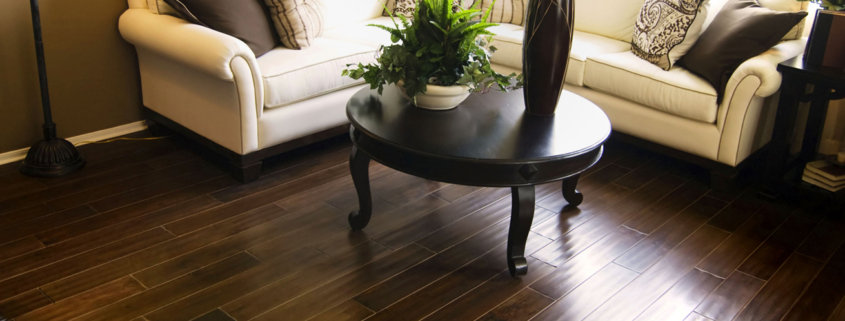
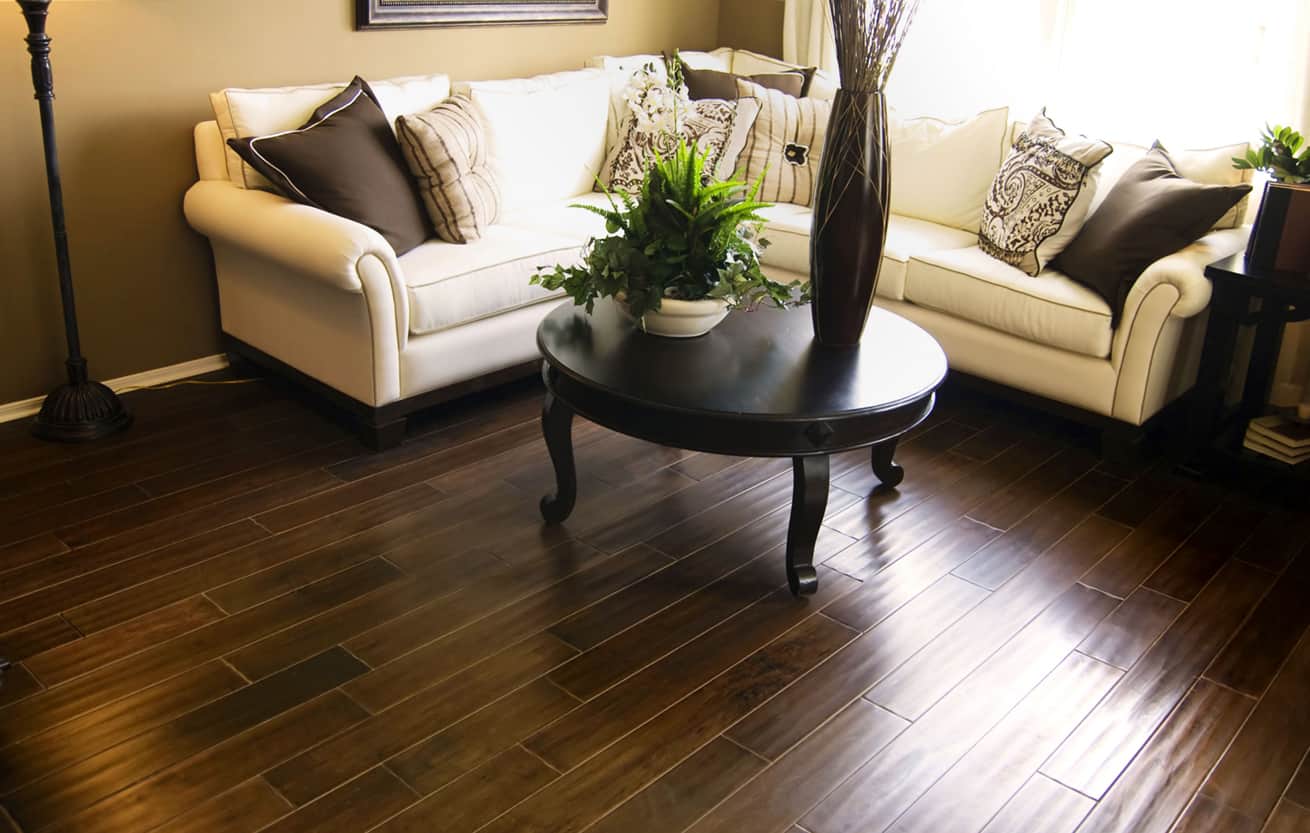




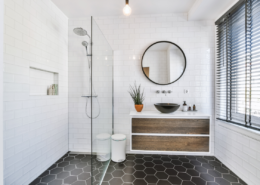


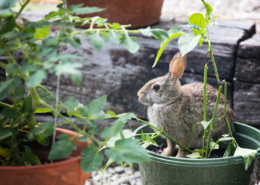
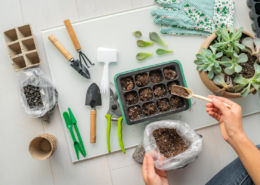



Rubbing alcohol is the common name for isopropyl alcohol. Same thing. It comes as 70% or 91%. Either is good for our cleaning recipes and purposes.
Is 70% rubbing alcohol the same as isopropyl 70%? Can they be used interchangeably in this application for wood and/or laminate flooring? Will it also work on tile?
Is it bad that I’ve been steaming my finished hardwood floors?? I never noticed a change in them, or the finish in 10 years, so I always thought it was OK.
If you are recommending the Microfiber Spray Mop to spray & mop the floors to clean them, is it necessary to also use another mop to dry the area.
I’m going out on a limb and guess that this would be a good cleaner for wood furniture as well.
We have a section of wood flooring where the finish has been removed. It gets dirty very easily and doesn’t look nice. Have you ever fixed something like this before?
We have laminate floors in one room. We have a area rug on the floor. We also have a pad underneath. When we recently took lifted up the rug, the pad had deteriorated and is stuck to the floor. Any ideas on how to get the stuck stuff up?
Thanks,
Mary
I would test a small area with olive oil. Apply a few drops, allow time for it to penetrate the sticky stuff, then gently attempt to rub it with your fingers. I have a strong feeling that will remove the sticky residue without harming the laminate. For sure you do not want to use anything water based as laminates have a tendency to soak up water like a sponge.
Alternatively you could do the same kind of test using WD-40. However, it has a pungent odor so I would not use it as my first attempt.
Thank you – we will try that. I will report back.
Mary